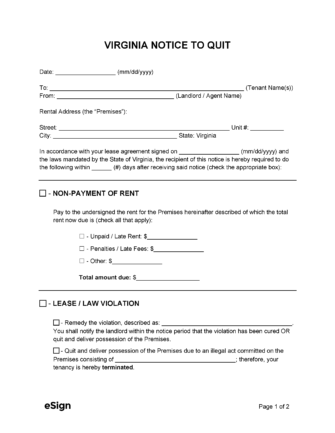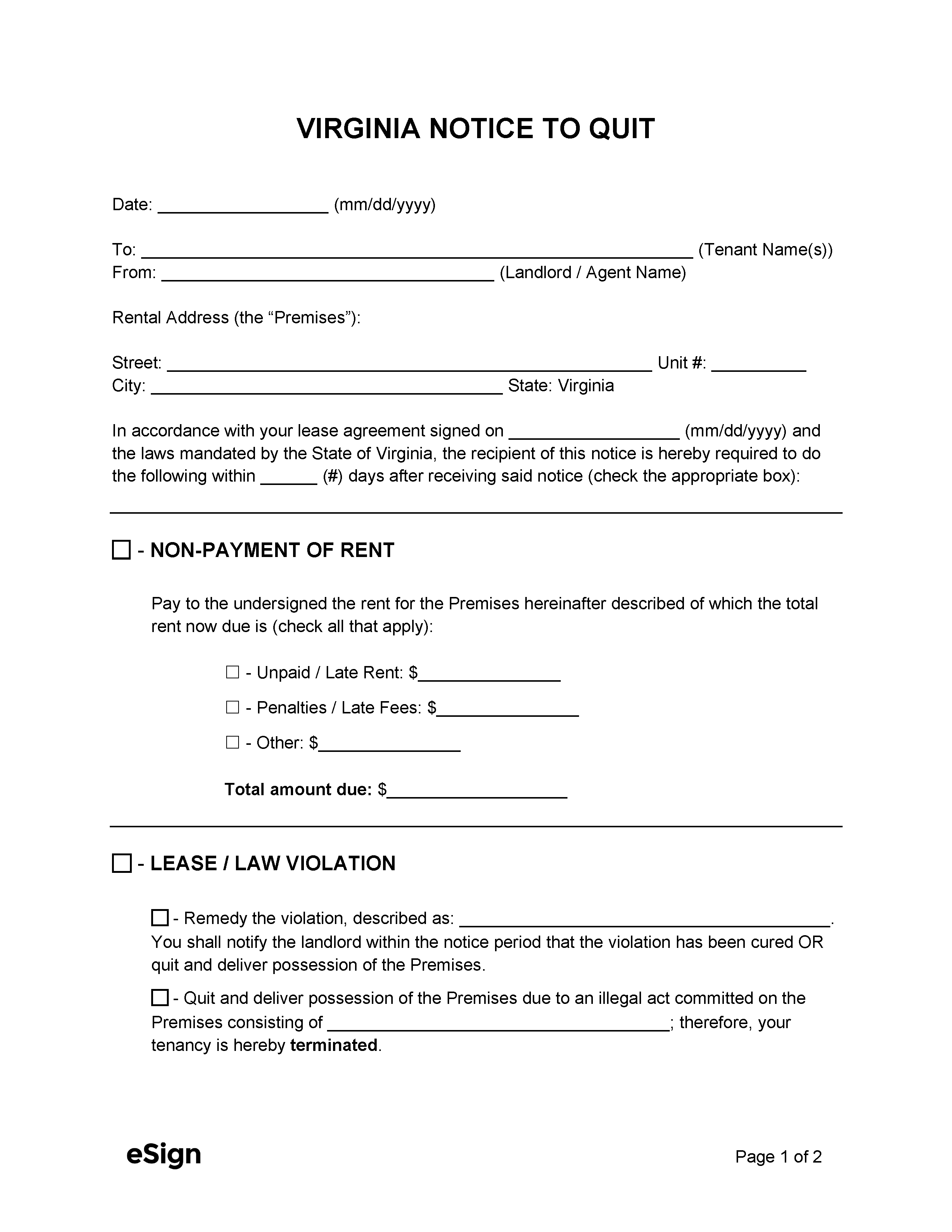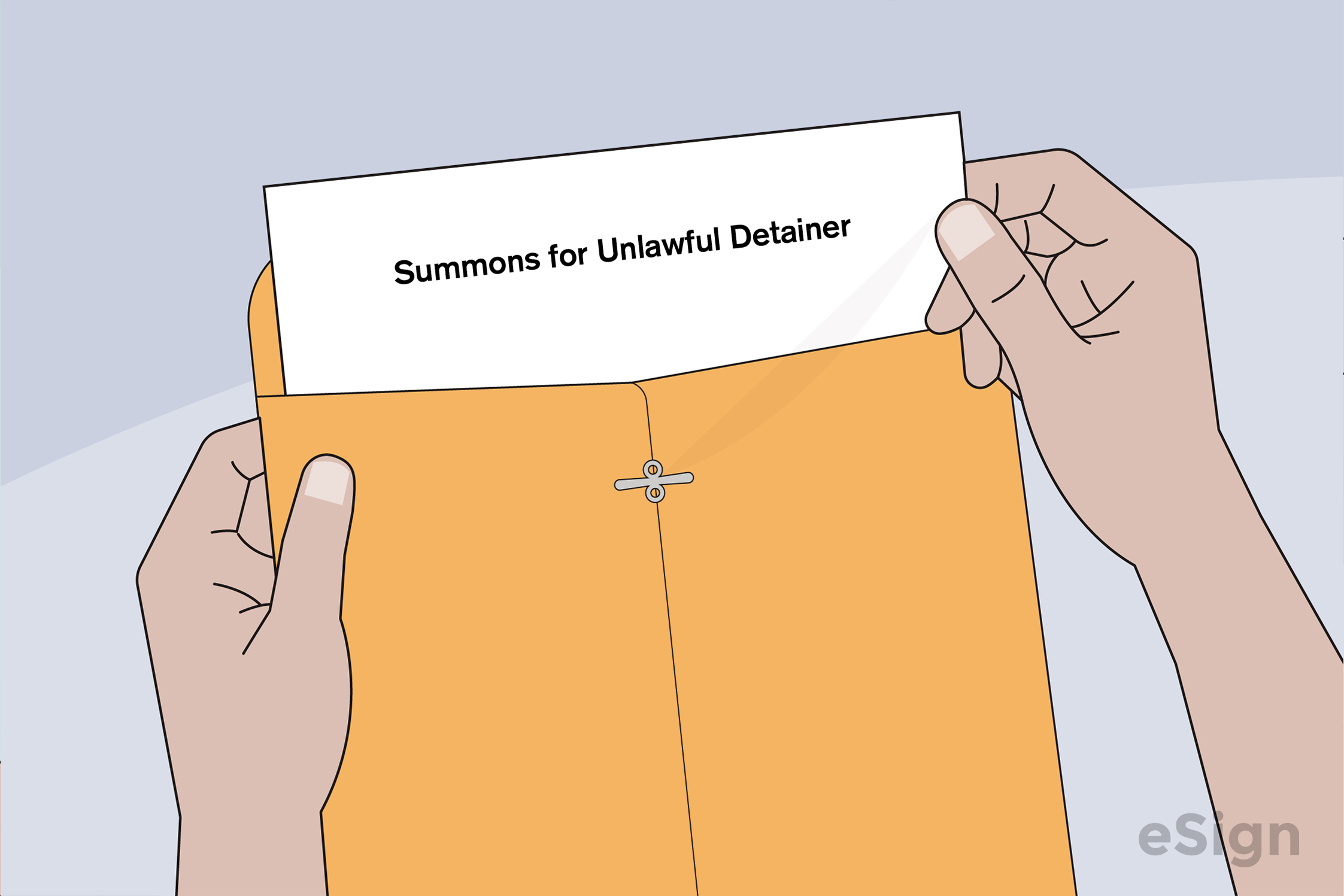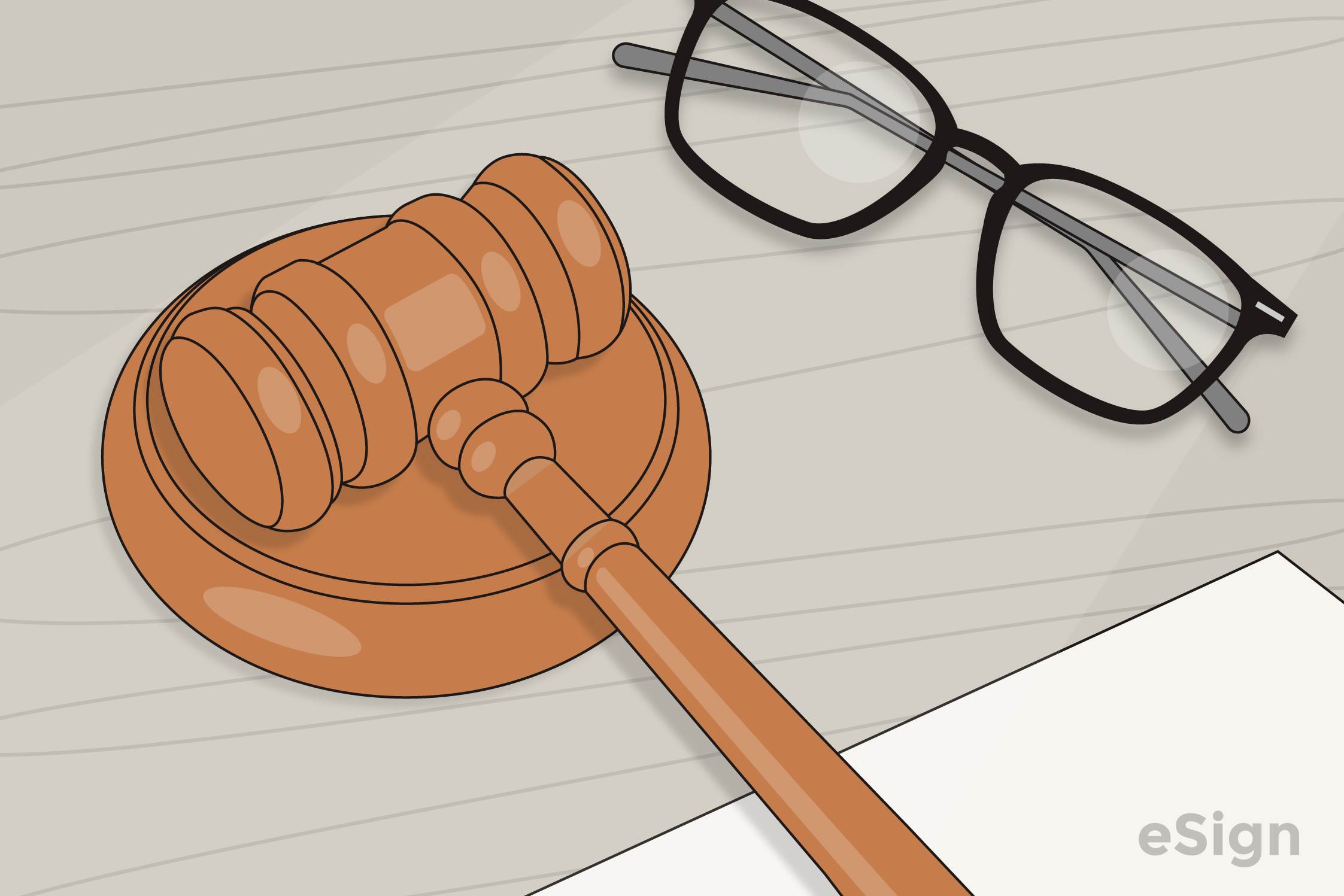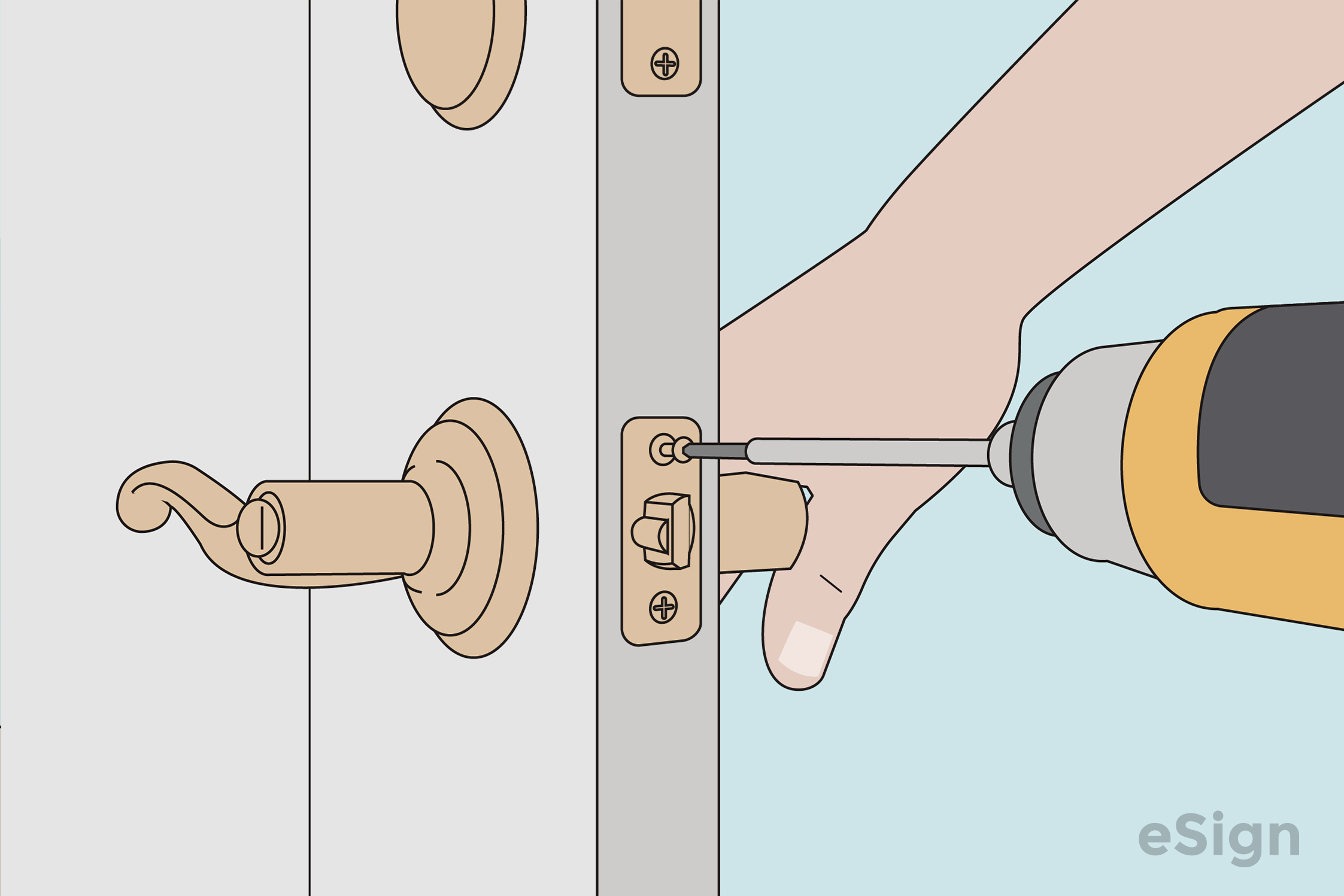Eviction Notices: By Type (4)
 5-Day Notice to Quit | Non-Payment – Demands that a tenant quit the premises due to the non-payment of rent (or other charges). 5-Day Notice to Quit | Non-Payment – Demands that a tenant quit the premises due to the non-payment of rent (or other charges).
Download: PDF, Word (.docx), OpenDocument |
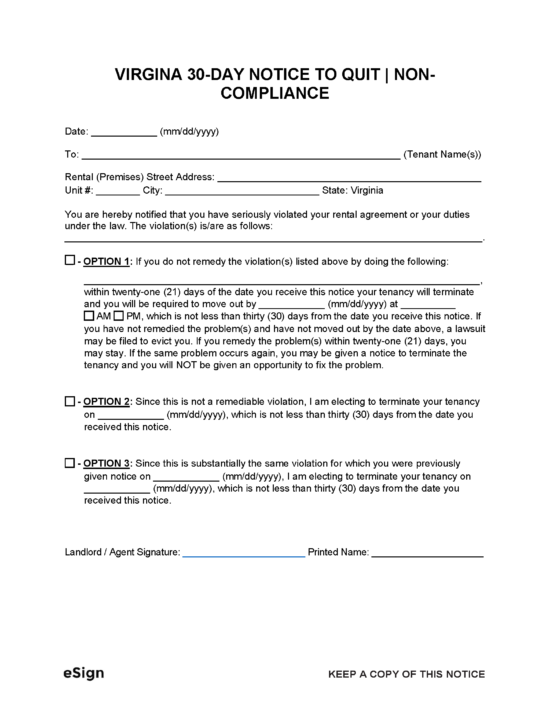 30-Day Notice to Quit | Non-Compliance – Notifies a tenant who has violated their lease or their duties as a tenant that they must vacate the unit or be taken to court. 30-Day Notice to Quit | Non-Compliance – Notifies a tenant who has violated their lease or their duties as a tenant that they must vacate the unit or be taken to court.
Download: PDF, Word (.docx), OpenDocument |
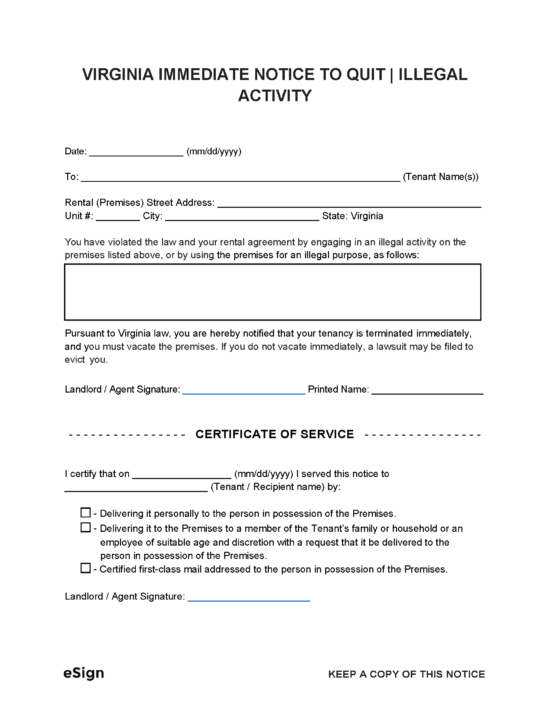 Immediate Notice to Quit | Illegal Activity – Informs a tenant that their tenancy has been terminated due to involvement in illegal activity. Immediate Notice to Quit | Illegal Activity – Informs a tenant that their tenancy has been terminated due to involvement in illegal activity.
Download: PDF, Word (.docx), OpenDocument |
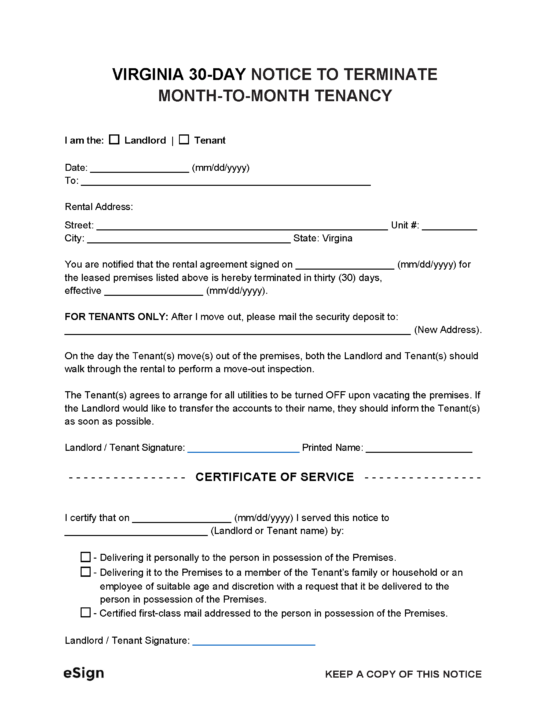 30-Day Notice to Terminate | Month-to-Month Lease – Delivered by a landlord or tenant to terminate a month-to-month tenancy. 30-Day Notice to Terminate | Month-to-Month Lease – Delivered by a landlord or tenant to terminate a month-to-month tenancy.
Download: PDF, Word (.docx), OpenDocument |
Notice Requirements
How to Evict a Tenant in Virginia
Step 1 – Notice to Quit
The eviction process starts with serving a notice to quit on the tenant. The notice informs the tenant of how much time they have to resolve the issue (if applicable) or leave the property.
Step 2 – Summons for Unlawful Detainer
To set a hearing, the landlord must file a Summons for Unlawful Detainer with the General District Court, along with proof that a notice was delivered to the tenant. The court will then serve the Summons on the tenant, requiring them to appear in court.
Step 3 – Hearing
Both parties must attend the hearing to state their claims. If the tenant fails to attend or admits to the landlord’s claims, the judge will order them to vacate. If the court rules in the landlord’s favor, the tenant will have 10 days to appeal by posting an appeal bond.
Once the appeal period ends, the landlord can obtain a Request for Writ of Eviction in UDP to evict the tenant.
Step 4 – Trial (If Applicable)
In the majority of cases, a decision will be ruled at the hearing. However, the judge may decide to schedule an additional trial if the tenant contests the amount of rent/damages owed and more deliberation is needed.
Step 5 – Writ of Eviction
The Writ of Eviction will be sent to the sheriff, who will then serve it on the tenant, along with a notice of when the eviction will occur. In some cases, the tenant may still resolve the issue and avoid eviction before the scheduled date.
Step 6 – Eviction
On the day of the eviction, the landlord will have a locksmith change the unit’s locks. The landlord may choose to give an additional 24 hours to remove their possessions from the property (after which they will be forfeited), or they may remove the tenant’s possessions themselves under the sheriff’s supervision.
Court Forms + Resources
Forms
- DC-469 Request for Writ of Eviction in UDP
- Signed By: Landlord
- Summons for Unlawful Detainer (Form DC-421)
- Signed By: Judge, Court Clerk, Landlord
- Writ of Eviction
- Signed by: Judge/Court Clerk and Sheriff
Resources
